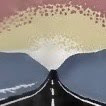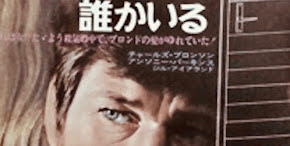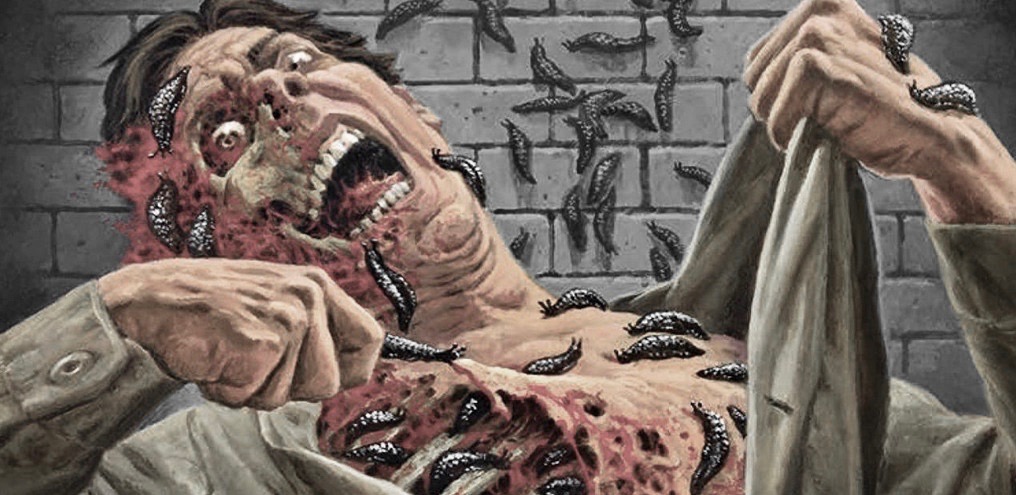 |
| 1950 D.O.A. starring Edmond O'Brien |
D.O.A. 1950: Before the ball really gets rolling, and things become serious for a small town businessman on vacation in San Francisco, an unbelievable sound occurs, more befitting a zany comedy caper, perhaps even a cartoon, than the sparsest, most serious of Film Noir vehicles...
 |
| The Eighties One |
Inside a lavish hotel, whenever an attractive "dish" passes our rural fish out of water, an intentionally corny and contrived wolf-whistle chimes... Not coming from any character in the movie but from the "author" intruded editing room: Like PULP FICTION's Uma Thurman drawing an animated box outside Jack Rabbit Slims, the viewer must simply go with it. So in this severe tale of a dying man frantically in search of who "killed him," perhaps that silly noise existed to separate the two halves – and that's the gist of this particular nightmarish odyssey. Loaded with whodunit potential since what's been done can't be set back, it's never a question since, with the exception of those convention partiers who left town before O'Brien wakes up with a lethal hangover, no one's really known to us or him other than a faithful secretary, back home, on the phone, talking to her frantic boss who, poisoned at a jazzy bar that the hotel party had moved to, he has only a few days to live, and has to find out who, and why?
 |
| Original Film's Foreign Poster |
Unlike many a Film Noir, the desired phantom doesn't lurk in the shadowy night, but inside – in this case, the bloodstream. Scenes where O'Brien goes from location to location, asking questions and finding clues, is more entertaining than sporadic gunplay. So if blood and guts, resolution and fulfillment is key to your movie-viewing experience, best skip D.O.A. It's as convoluted as the antagonist would be in this extremely dire circumstance. In fact, this Film Noir aka "Dark Film" is so dark, after a while it all seems completely normal, somehow.
 |
| Looks like a TV Show Promo |
D.O.A. 1988: A man walking into a stone-slab police station, saying, bluntly, something like, "I've been murdered," was too intriguing not to be attempted again. Enter Dennis Quaid, who fits this remake just fine, at least when the movie flows smoothly, especially in the beginning. Originally, Edmond O'Brien was pretty much alone in the process of finding his "killer" while Quaid's surrounded by a collected horde including... well... first off, instead of a small town businessman, he's a big city college professor and author, and around him are students, faculty, good and bad dames, and eventually, badgering cops.
Driven by the usual 1980's searing saxophone combined with tracks sounding as if The Cure were a dive bar-band, D.O.A. replaces sparse and effective Noir simplicity with random hit-and-miss ingredients of the overall Crime genre. O'Brien, who was an alone and easy target, after his first night of partying, didn't have an assortment of people to deal with; that he's known for a long time. In Quaid's case, having published a popular novel years earlier, during his contented writer's block while easily landing promotions on campus, most people don't like him much, or want what he has and might do anything to acquire it...
 |
| SCORES OF Original: *** Remake: *** |
One of his best students is a very intelligent flake who knows all the answers, and sadly, given his importance, is completely miscast. Resembling one of several dolts you'd see kicking around a noisy game of hacky-sack, he only has a few scenes but even more than THE THIRD MAN Harry Lime, his name's spoken again and again – even by Quaid's ex-wife (
wink). Still, the most effective scenes are in the buildup, learning how everyone's tethered around the main character. Then, during the second half, after the poisoning, our man takes to the city streets.
What's completely benign in the original is the helpful-dame love interest, who's not interesting at all – and, as mentioned in the first review, she was an easy phone call away. So comparably, Meg Ryan, Quaid's INNERSPACE ingenue and (at that time) real life spouse, does a good enough job as a flirtatious student. But she's a bit too progressive to be an effective temptress, especially on his end, having to resist a sure thing, deleting the necessary anti-chemistry that's supposed to heat up and improve, and ultimately she means very little in a movie about, basically, the walking dead, so to speak. And yet, after a while you'll forget he'd been poisoned at all – Quaid has so much going on around him, an impending death is secondhand, and the symptoms he does feel, visually shown in a flurry of surreal neon, feels more like a psychedelic weekend bender:
Lit On Arrival. Then again, at least he's thoroughly interested in the outcome, so the Mystery, exceeding the main plot plus the fact he's accused of murder, does have value despite an anticlimactic turnout. So, in a nutshell, for a Neo Noir that was never given much credit... one of several made during the 1980's including BODY HEAT, THE POSTMAN ALWAYS RINGS TWICE, THE BEDROOM WINDOW, BLUE CITY, TEQUILA SUNRISE and THE HOT SPOT... it's really not too shabby, by itself or as a sequel.





























































No comments:
Post a Comment
Note: Only a member of this blog may post a comment.